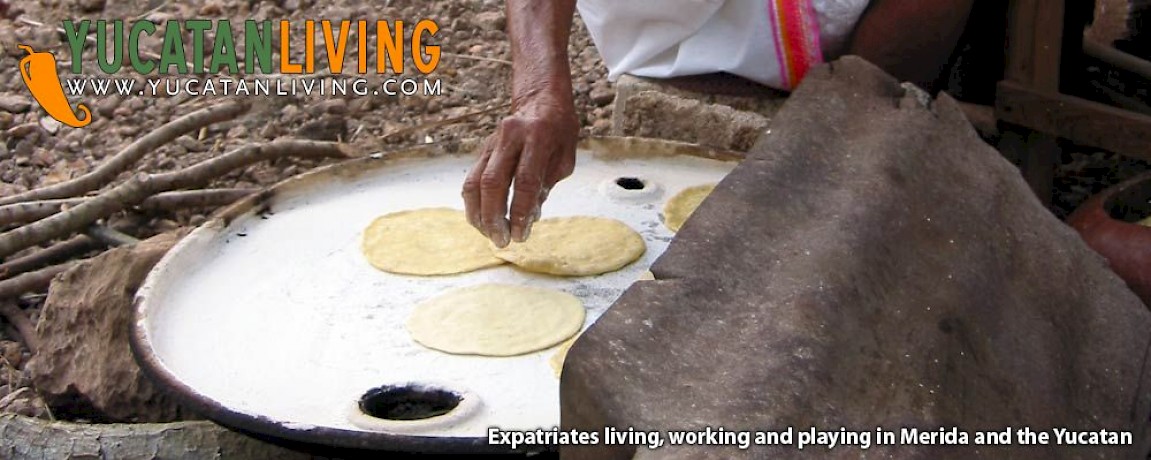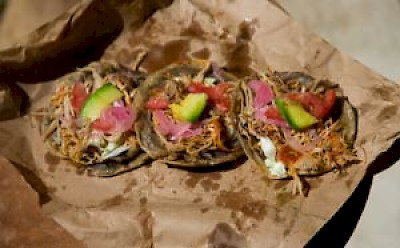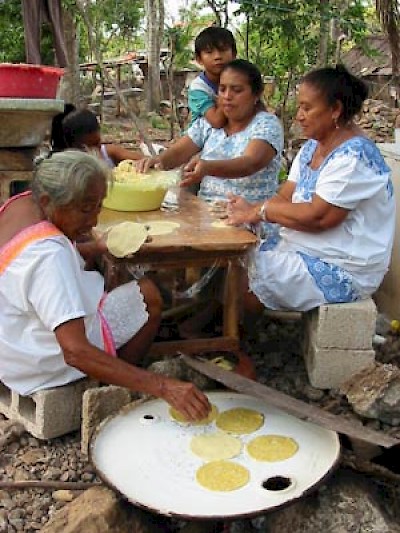How To Make Panuchos and Salbutes
Where's the Mexican Food?
Anyone who lives here will tell you that one of the best things about living in the Yucatan is the food. When we visited here and bought a house, we were still clueless about Yucatecan cuisine... we had no idea about the treasure trove of tastes and delights that we had stumbled into. Our idea of Mexican food was formed in California, where Taco Bell and chicken enchiladas rule the day. So imagine our surprise when we couldn't find a quesadilla or a burrito to save our souls (or our stomachs), but instead were presented with tiny little tortillas and things like castacan and cochinita. What the hey?
As in many cultures, the food was another avenue of learning for us about the unique place that Yucatan holds in Mexico and in the world. And learn we did.
Fast forward seven years and now we're very practiced at eating everything from that aforementioned cochinita and castacan to pavo relleno negro and papadzules. We know what a pib is and we can tell the difference between a habanero and a xcatic.
In the interest of passing on our hard-won knowledge, we plan to bring you a recipe from time-to-time. Some will be reproduceable, others might just be for show. The food here is not just full of flavor, but it is full of stories too. We are not cooks by profession, but we tend to eat rather regularly. And we love a good tale as much as a good table.
Here, then, in response to a request that was sent to Yucatan Living recently, is how we have learned that one can make authentic Yucatan panuchos and salbutes.
How To Make Panuchos
1. Sharpen your machete, stroll casually into your backyard and select a healthy pollo (chicken) or, if it’s a special occasion, a pavo (turkey). Using the machete, remove the head. Let drain. Deposit in a bucket of warm water for several minutes until the feathers can be easily removed by your eldest daughter. Remove feet and internal organs. Wash thoroughly.
2. Pick some naranjas agridulces (sour oranges) from your tree and squeeze the juice into a bowl. Add achiote (annatto paste) until thickened. Add sal (salt) to taste. Spread generously over the bird inside and out. Wrap bird in moist hojas de platano (banana leaves).
3. Remove your son’s soccer ball from your pib (the one- to two-foot-deep baking hole you’ve dug in the back yard). Start a wood fire in the pib and let burn until you have a floor of glowing red embers. Spread two to three centimeters of moist earth over the embers. Deposit the pollo in the pib and fill the hole with dirt. Let bake until done, usually 1 to 2 hours depending on the size of the bird (more time is required for a standard pavo).
4. Send your wife, suegra (mother-in-law) or the woman in your family with the smallest hands next door to the Maseca, Sumasa or Minsa tienda (store) to purchase half a kilogram (about a pound) of harina de maíz (corn flour), more commonly called masa. She will know to mix this slowly with water (roughly two cups masa with 1/4 to 1/3 cups water), while kneading the dough into a ball.
5. Cut off the bottom of a 50 gallon oil drum and prop it about a foot off the ground with large stones on two sides. Start a wood fire underneath. Wait until any oil or other residue on the metal is burned away before using.
6. Your wife, suegra, hermana (sister) and a few other women in the family will sit around a table. Each will portion about two tablespoons of masa dough from the ball and pat into a tortilla using nothing but her tiny hands. The resulting tortilla will be about four inches in diameter, maximum.
7. She will set the raw tortillas, two at a time, on the hot metal comal (grill) constructed from the 50 gallon drum, letting them cook for about 30 to 45 seconds on each side. If she is planning to make panuchos, she will tamp them down a bit around the edges with an index finger (the tortillas tend to inflate when you do that). When each tortilla is finished cooking, she will deposit them in her lek (round, dried, hollow gourd with the top cut off), which has been lined inside with a clean, brightly-colored kitchen towel. Keep covered.
8. Remove the baked bird from the pib and let cool. Your second daughter will shred the meat from the bird by hand into short strips about two centimeters long with the circumference of a soda straw. Keep the shredded meat in a bowl and cover. Don’t forget to remind your daughter to wash her hands before and after.
9. Squeeze the juice of several limones (Yucatan lemons, which are more like limes) into a small bowl. Add finely-diced habanero chile picked from the bush growing next to the front door and, optionally, finely-diced cilantro.
10. By now, your youngest daughter (or perhaps the friendly wife of a neighbor) has diced some jitomates (tomatoes), pepinos (cucumbers),aguacates (avocados) and maybe lechuga (lettuce). Someone has brought out a bowl of cebolla morada (purple onions), previously sliced and marinated in naranja agria.
11. Now it's time to make a panucho. Take a warmed, cooked little tortilla balloon, and slit it open enough to deposit a spoonful or two of black bean paste inside. Drop the tortilla into a pot of hot oil and deep fry it.
12. Remove the now-crispy tortilla, place it on your plate, layer on lettuce, shredded chicken or turkey, cucumber, cebolla morada, tomato and avocado, in that order. Sprinkle habanero sauce over all, if you like to sweat and pant while you eat. That's a panucho!
13. Eat and enjoy, probably with a side of ice-cold Mexican Coca-Cola.
Would you Rather Have a Salbute?
Then skip Step 7. Drop the fresh uncooked tortillas directly into the hot oil for deep frying. The resulting tortilla will be softer, and will not be puffed up like a balloon. Skip Step 11 and go directly to Step 12. That's a salbute!
Repeat Step 13. Often.
Buen provecho!











Comments
Best. Recipe. Ever. 16 years ago
[...] Off-topic from Spain, but just read this wonderful recipe for panuchos (tasty Yucatecan snack) on Yucatan living. [...]
Reply
« Back (40 to 41 comments)